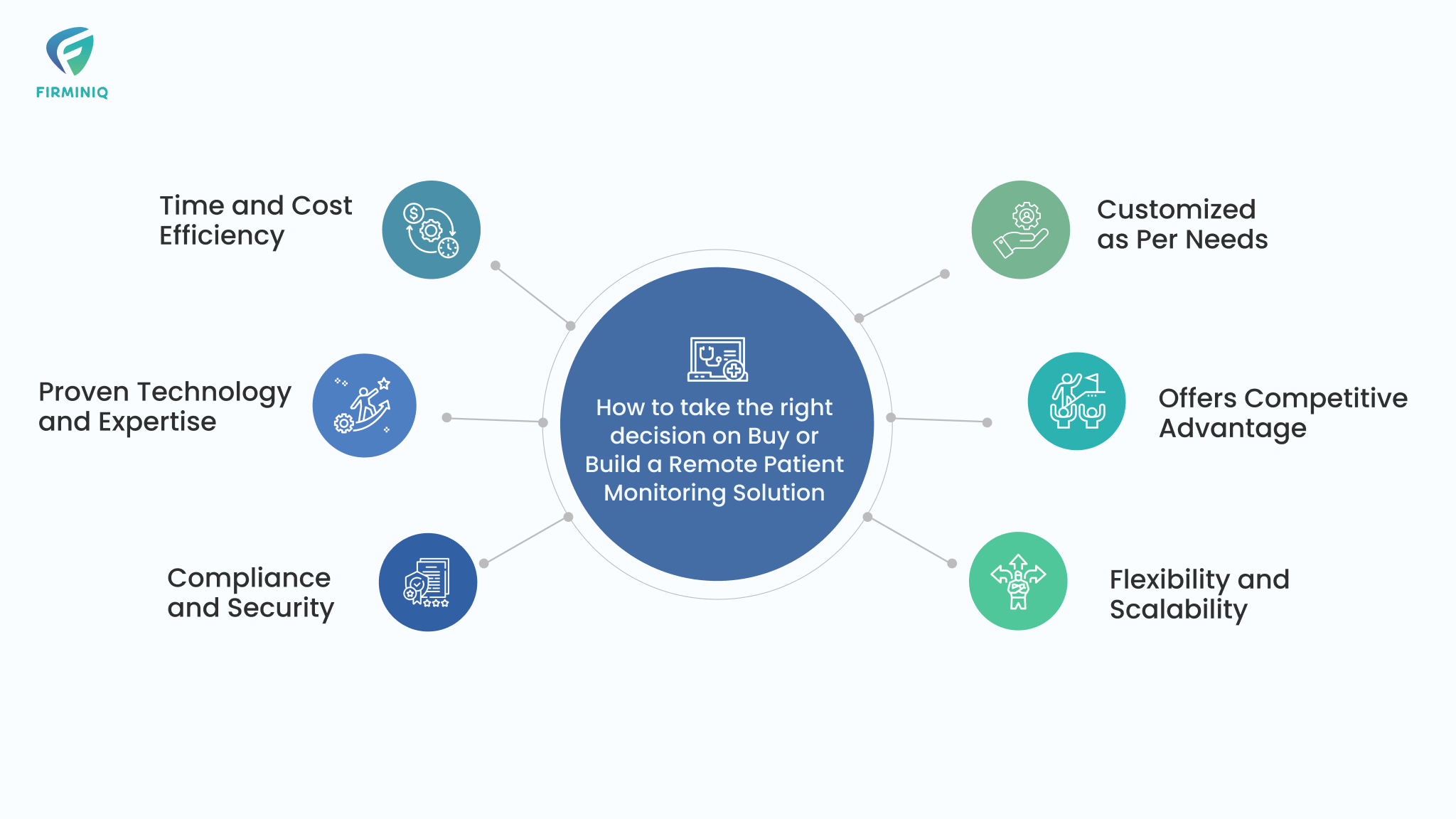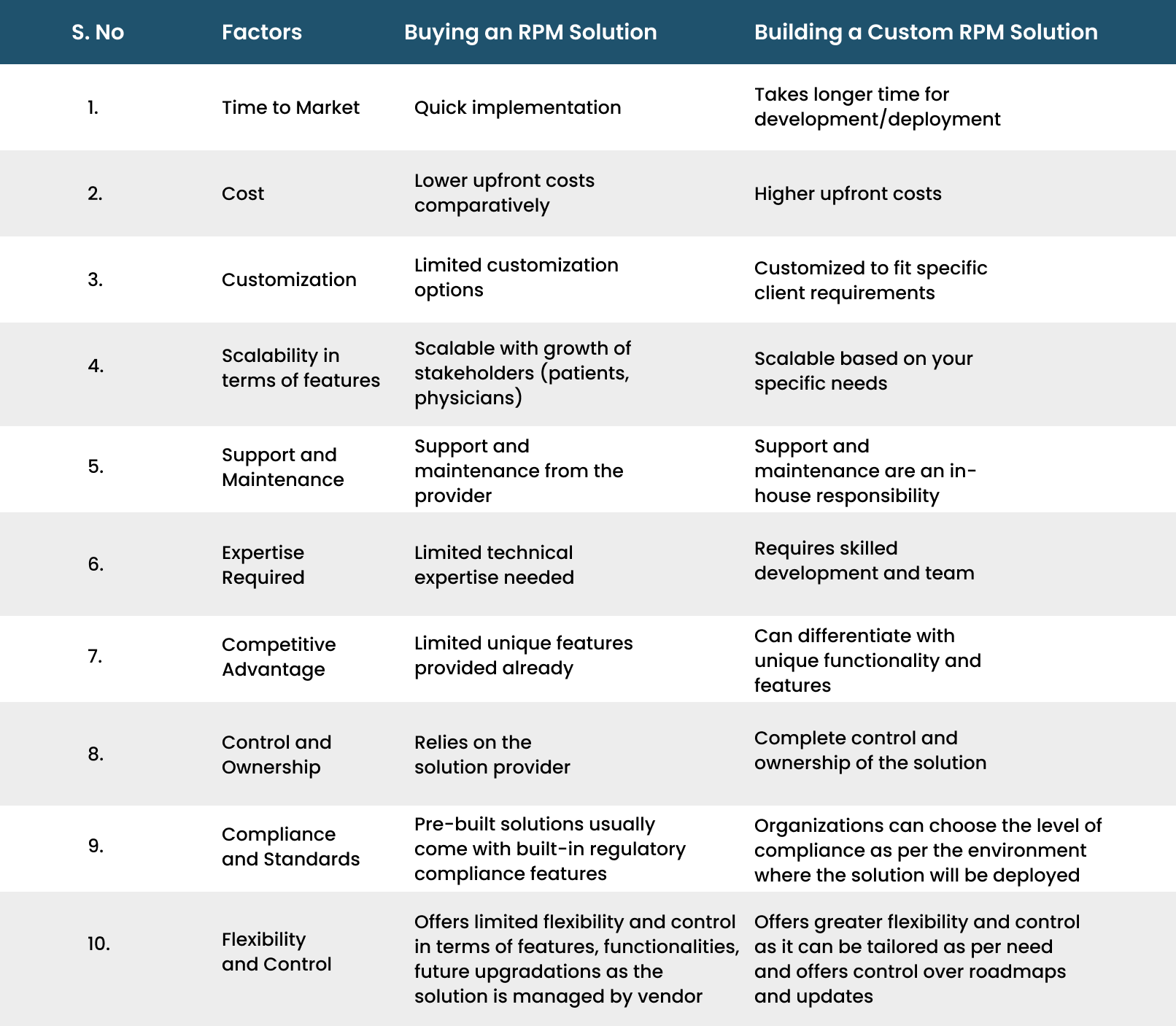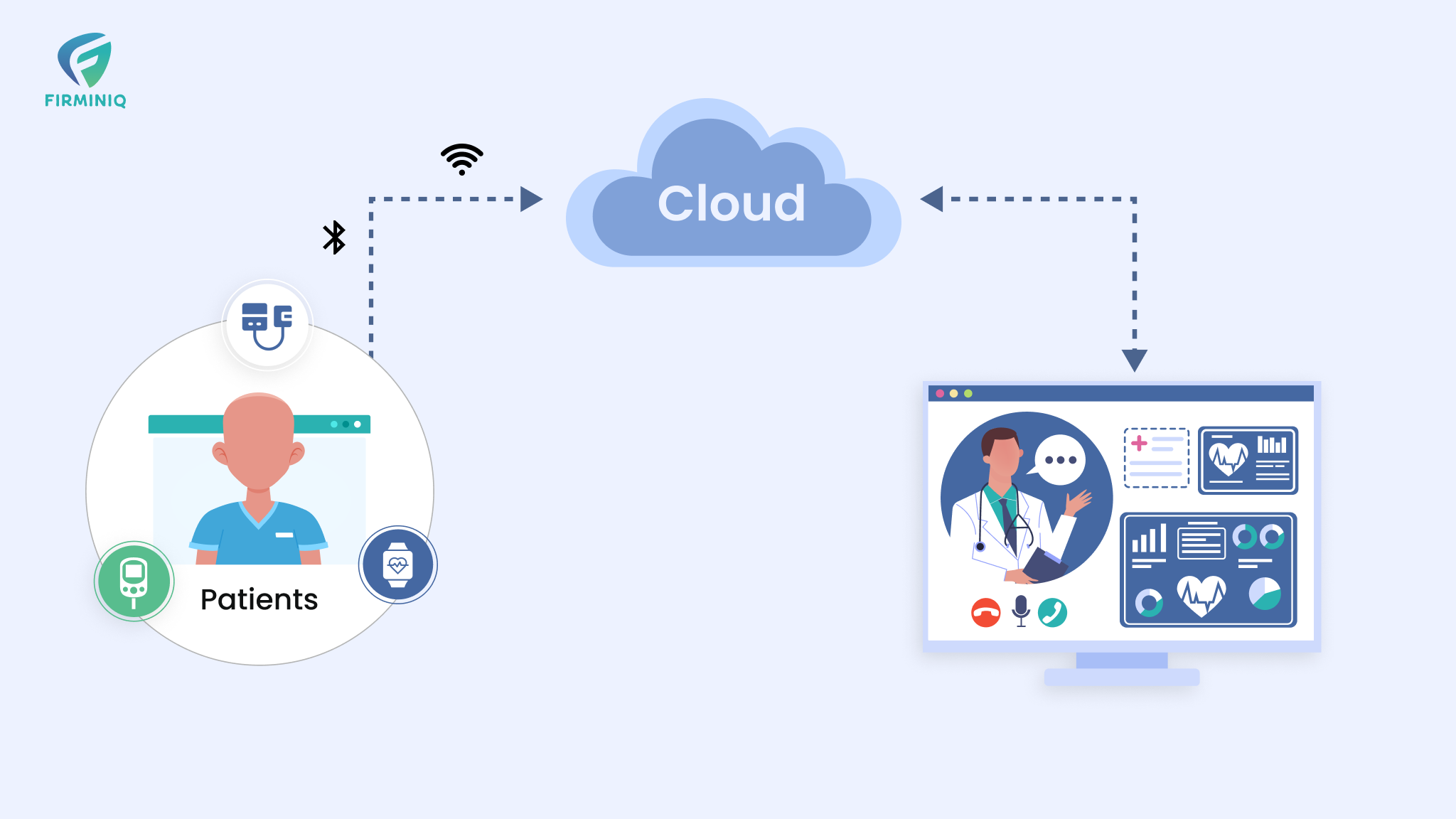Introduction
Remote patient monitoring is a crucial healthcare delivery method that has gained significant importance recently. Leveraging advanced technologies, RPM (Remote Patient Monitoring) has been helping patients and physicians with real-time vitals, enhanced access to virtual care, chronic disease management with timely intervention, and more patient involvement in self-management. All these benefits enhanced the usage of RPM in healthcare.
As per Markets and Markets, the global RPM market in terms of revenue was estimated to be $53.6 billion in 2022 and will reach $175.2 billion by 2027, at a CAGR of 26.7% from 2022 to 2027.
When considering whether to buy a build a Remote Patient Monitoring solution, there is no one-size-fits-all. There are two main options: buying a pre-built solution or building a custom one. The blog helps you explore both the options and allows you choose the right one as per your organization’s need.
A Quick Comparison that Highlights the Crucial Factors
Pros and Cons of Buying an RPM Solution
Pros of Buying an RPM Solution
Purchasing a pre-built RPM solution can have its own set of advantages and that includes:
a. Time and Cost Efficiency
Buying a readymade RPM solution saves time, resources, and cuts down the costs associated with the overall development process. It is an ideal option for healthcare organizations who instantly want to implement the solution as buying it abolishes the need for extensive software development, testing, and other processes, allowing you to quickly implement the solution so physicians can monitor patients virtually.
b. Proven Technology and Expertise
The pre-built RPM solutions are developed by organizations having expertise in the domain. As such organizations have the required knowledge, skill set and a record of accomplishment in the field, they ensure to develop solutions that are reliable and compliant with the industry standards.
c. More Scalable and Flexible
Pre-built RPM solutions are designed in a way that can compensate for a range of healthcare needs. From offering scalability to adjusting a growing number of patients, the pre-built RPM solutions offer more flexibility. Also, these solutions can seamlessly be integrated with the existing healthcare systems including EHR (Electronic Health Records).
d. Compliance and Security
Keeping the compliance and security regulations in mind, the pre-built RPM solutions ensure robust security. They ensure compliance with HIPAA (Health Insurance Portability and Accountability) and other regulations as per different geographies, while ensuring the confidentiality of the patient data is maintained.
Cons of Buying an RPM Solution
a. Lacks Customization
Pre-built solutions may not perfectly align with the needs of the organizations as it lacks customization options. As these solutions are already built and the features are already established, there may be customization limitations.
b. Dependency on Solution Provider
For every small thing including updates, bug fixes, and ongoing support, the organization relies on the vendor. Also, if by any chance the vendor discontinues the product or fails to meet expectations, the organizational operations can be disrupted.
c. Lack of Ownership
When an organization purchases a pre-built solution, they lack control over the software and intellectual property. As you do not own the IP (Intellectual Property), your ability to customize the solution according to your organization’s unique requirements may be limited
Pros and Cons of Building an RPM Solution
Pros of Building an RPM Solution
When the organization considers building an RPM solution, they can avail themselves of the following benefits:
a. Customized as Per Needs
Building an RPM solution allows organizations to customize it as per their requirements, which could easily get with their workflow. It allows them to integrate the rich features and functionalities, and processes as per the patient population and needs. Moreover, the organizations have complete control over these features and integrations.
b. Offers Competitive Advantage
A custom-built solution offers a competitive advantage as it offers features and functionalities as per the organization’s demands, which offers a competitive edge and allows organizations to differentiate their services in the market.
c. Offers a Complete Ownership
The custom solution offers a complete core and ownership over the development, deployment, testing, maintenance, and other processes involved. The organization can make updates and alterations as per their changing needs and no external vendor is required.
d. Flexibility and Scalability
With a custom-built solution, organizations can leverage flexibility and scalability as the organization evolves and the stakeholder rises. It can adopt the changing needs, support the additional functionalities, and integrate with the existing technologies and workflows.
Cons of Building an RPM Solution
a. Higher Upfront Costs
Developing a custom solution needs a more upfront investment as compared to buying a readymade solution. From the right hiring to managing the project and further maintenance, everything is handled by the team itself.
b. More Time to Market
When building a custom RPM solution, it may be a time-consuming task as it involves the entire software development lifecycle, design considerations, resources, testing, and deployment as well. The overall process might lead to a delay in the remote patient monitoring program implementation.
c. Lack Technical Complexity and Expertise
When a custom solution is developed, a skilled team with expertise in the healthcare domain software development, healthcare regulations, and cybersecurity is essential that ensures your organization can meet the needs and necessary standards, that otherwise could have been a challenging task. Also, acquiring and maintaining the necessary technical expertise can be challenging and require ongoing training or external assistance.
Epilogue
Upfront costs, timeline, compliance, and timeline are a few factors that help organizations make the right decision. The ideal option for the organization depends on their needs. Evaluating all the factors mentioned above can help organizations make the right decision.
No matter if you buy a pre-built solution or get it customized, it is essential for the organizations to hire the right service provider for remote patient monitoring services. If you are looking for the best vendor that can help you offer robust RPM solutions, reach out to FIRMINIQ!








